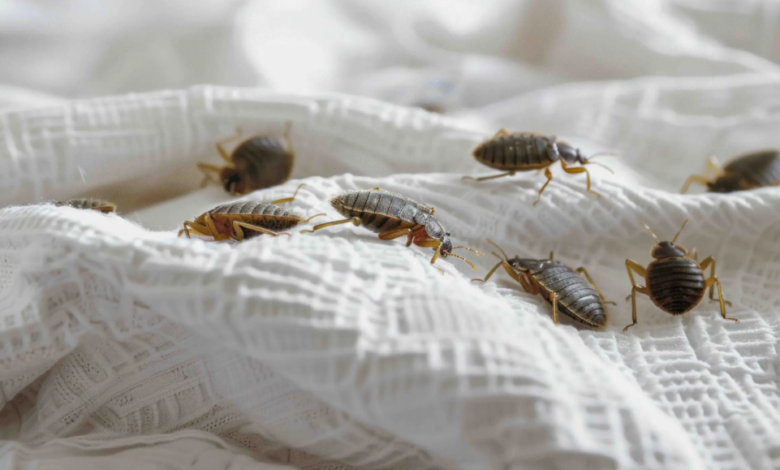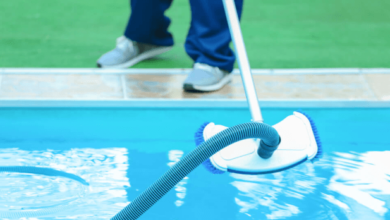Seal and Protect: How to Bedbug-Proof Your Home

Bedbugs are tiny, blood-sucking pests that can turn your home into a nightmare. These insects hide in mattresses, furniture, and even electrical outlets, making them difficult to detect and eliminate. Once they infest your home, getting rid of them can be costly and time-consuming. The best approach is prevention—bedbug-proofing your home before an infestation occurs.
In this article, we’ll explore effective strategies to seal and protect your home from bedbugs, ensuring a peaceful and pest-free living environment.
Understanding Bedbugs: Why Prevention Matters
Bedbugs (Cimex lectularius) are small, reddish-brown insects that feed on human blood, usually at night. They don’t transmit diseases, but their bites can cause itching, allergic reactions, and sleepless nights. These pests are excellent hitchhikers, often entering homes through luggage, second-hand furniture, or clothing.
Since bedbugs reproduce quickly, a single female can lay hundreds of eggs in her lifetime. This makes early detection and prevention crucial. By taking proactive measures, you can avoid the stress and expense of a full-blown infestation.
Step 1: Inspect and Identify Potential Entry Points
Before Bedbugs control ( bekæmpelse af væggelus ) your home, inspect it thoroughly for signs of an existing infestation. Look for:
- Tiny bloodstains on sheets or mattresses
- Dark spots (bedbug excrement) on furniture
- Shed skins or eggshells in crevices
- A musty odor in severe infestations
If you find evidence of bedbugs, contact a pest control professional immediately. If not, proceed with preventive measures.
Step 2: Seal Cracks and Crevices
Bedbugs hide in the smallest cracks and gaps. Sealing these entry points can prevent them from settling in.
- Use caulk to fill gaps in walls, baseboards, and window frames.
- Install door sweeps to block gaps under doors.
- Repair peeling wallpaper and loose electrical outlets where bedbugs can hide.
See also: Top Five Renovation Tips for Home Remodeling
Step 3: Protect Your Bedding and Mattress
Since bedbugs often infest beds, safeguarding your mattress is essential.
- Encase your mattress and box spring in bedbug-proof covers (look for zippered, allergen-proof ones).
- Wash and dry bedding weekly on high heat (at least 120°F) to kill any hidden bugs.
- Avoid placing your bed directly against the wall—bedbugs can climb up and drop onto your bed. For more read https://vaeggelus-fri.dk/
Step 4: Be Cautious with Second-Hand Items
Used furniture, clothing, and luggage are common bedbug carriers.
- Inspect second-hand furniture thoroughly before bringing it home.
- Wash and dry used clothing on high heat immediately.
- Vacuum and steam-clean upholstered items to eliminate hidden pests.
Step 5: Travel Smart to Avoid Bringing Bedbugs Home
Hotels, airports, and public transport are hotspots for bedbugs. Protect yourself while traveling:
- Inspect hotel rooms before unpacking—check mattresses, headboards, and furniture.
- Keep luggage on a luggage rack (not on the bed or floor).
- Wash all clothes in hot water after returning from a trip.
Step 6: Reduce Clutter to Eliminate Hiding Spots
Bedbugs thrive in cluttered spaces. Keeping your home tidy reduces their hiding places.
- Declutter regularly, especially in bedrooms and living areas.
- Store items in sealed plastic bins instead of cardboard boxes.
- Vacuum frequently, paying attention to carpets, rugs, and furniture seams.
Step 7: Use Natural and Chemical Preventatives
While sealing and cleaning are the best defenses, some additional measures can help.
- Diatomaceous earth (DE): A natural powder that dehydrates and kills bedbugs. Sprinkle it in cracks and crevices.
- Essential oils: Peppermint, tea tree, and lavender oils may repel bedbugs (though they won’t eliminate an infestation).
- Bedbug interceptors: Place these under bed legs to trap crawling bugs.
Step 8: Monitor for Early Signs of Infestation
Early detection can prevent a major outbreak.
- Use bedbug monitors near beds and furniture.
- Check for bites—small, red, itchy welts in a line or cluster.
- Inspect regularly, especially after guests stay over or when bringing in new items.
What to Do If You Find Bedbugs
Despite precautions, bedbugs can still sneak in. If you spot them:
- Isolate infested items in sealed plastic bags.
- Wash and heat-dry affected fabrics.
- Vacuum thoroughly, then dispose of the vacuum bag outside.
- Call a professional exterminator for severe infestations.
Conclusion: Stay Vigilant and Proactive
Bedbugs are resilient pests, but with the right precautions, you can keep them out of your home. By sealing entry points, protecting your bedding, traveling carefully, and maintaining a clean environment, you significantly reduce the risk of an infestation.



